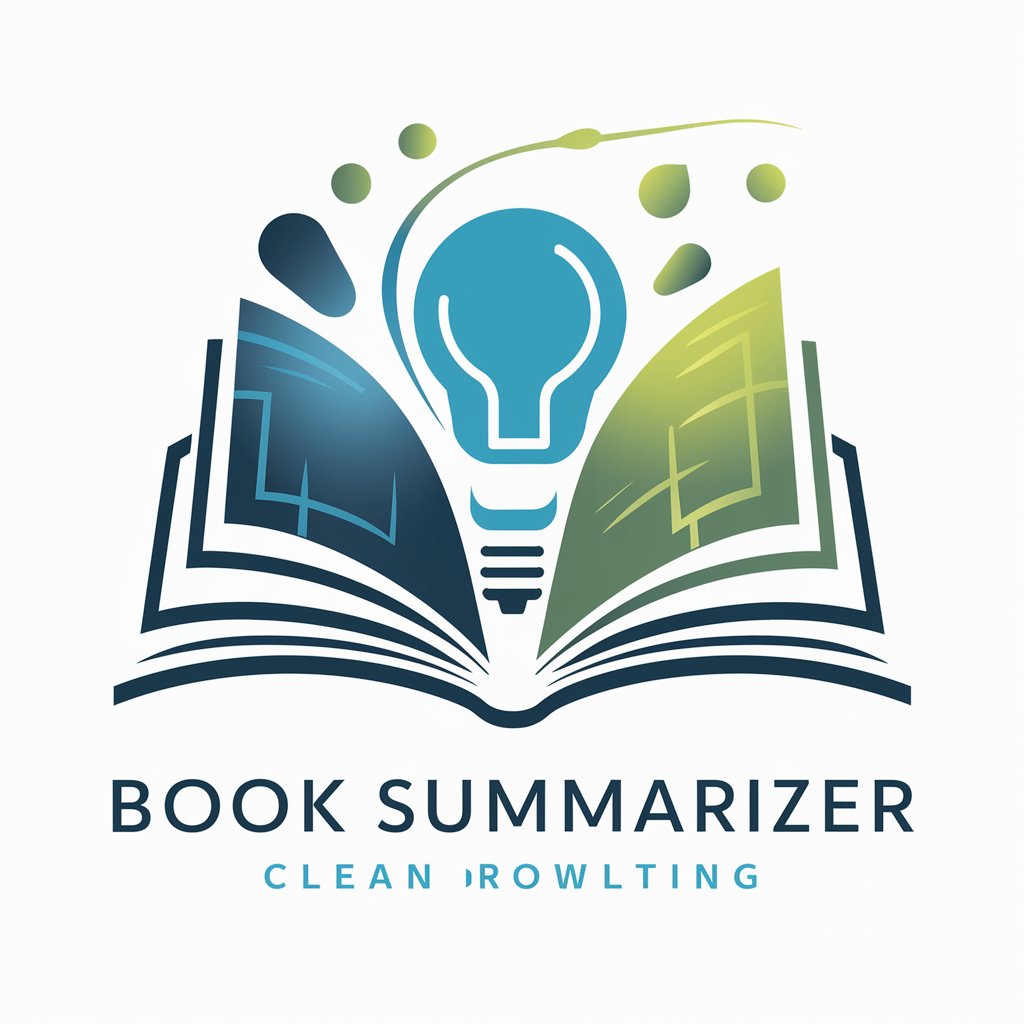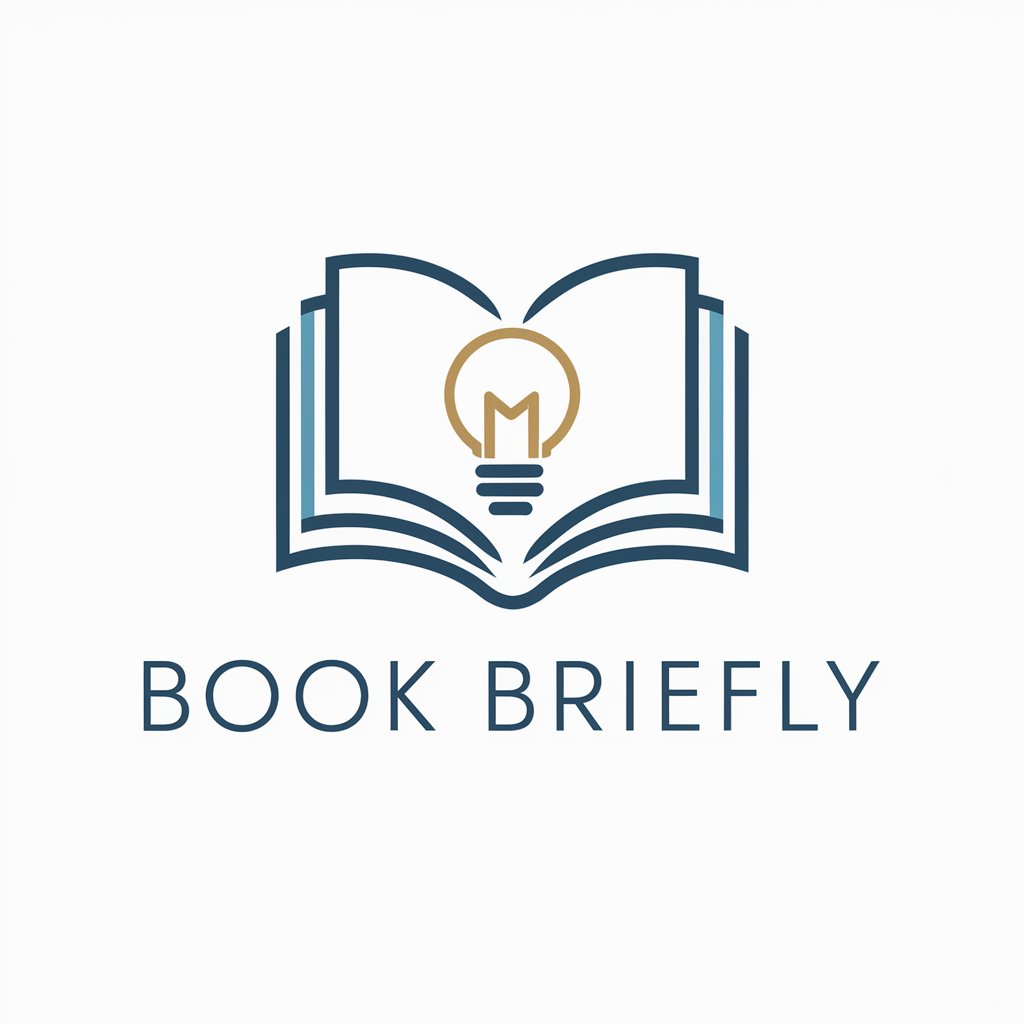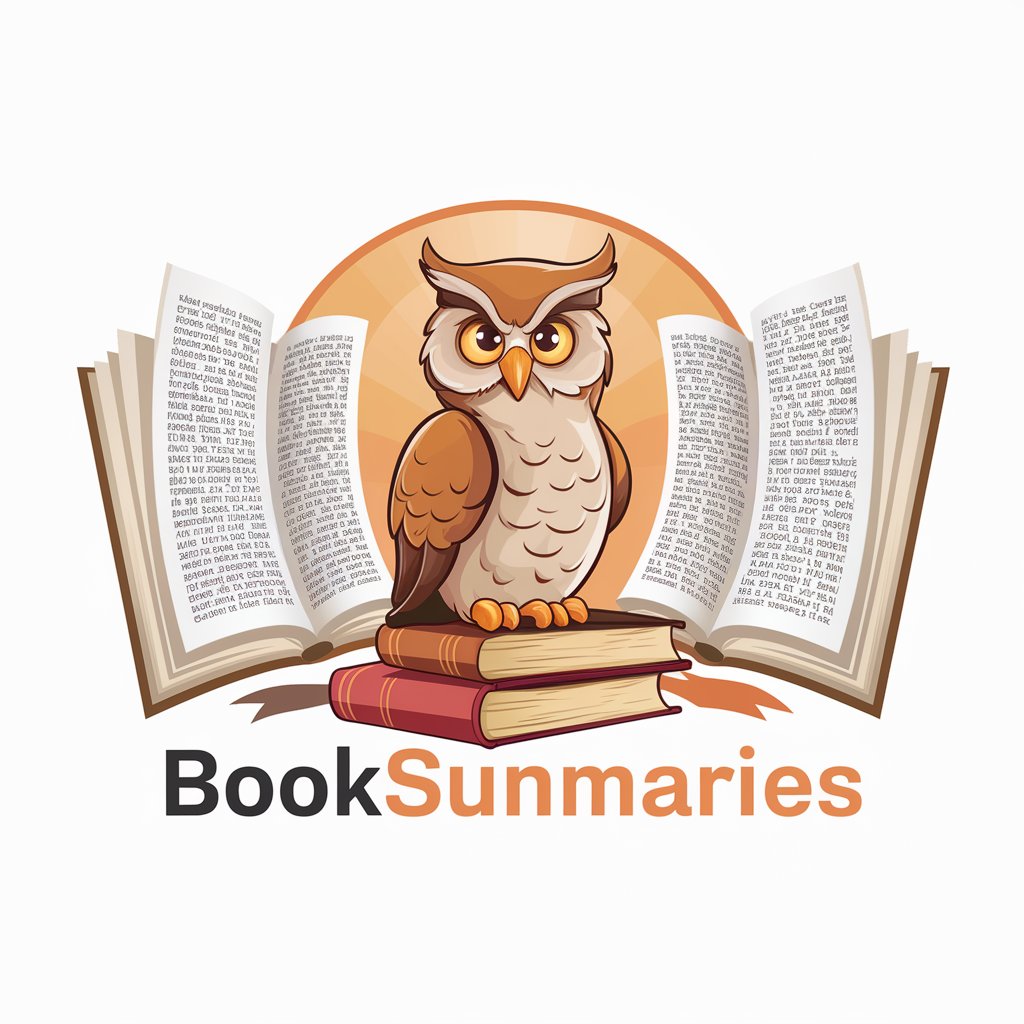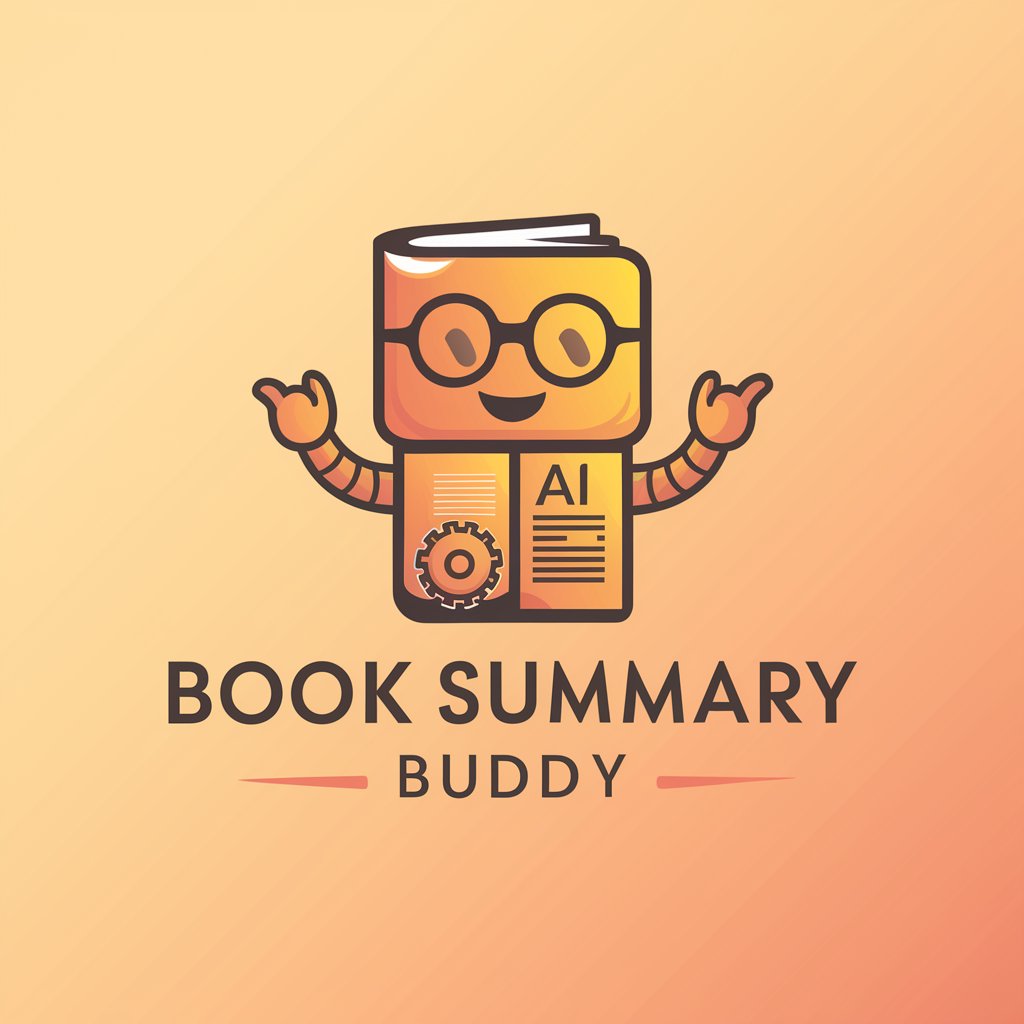
Visual Book Summarizer - Visual Chapter Summaries
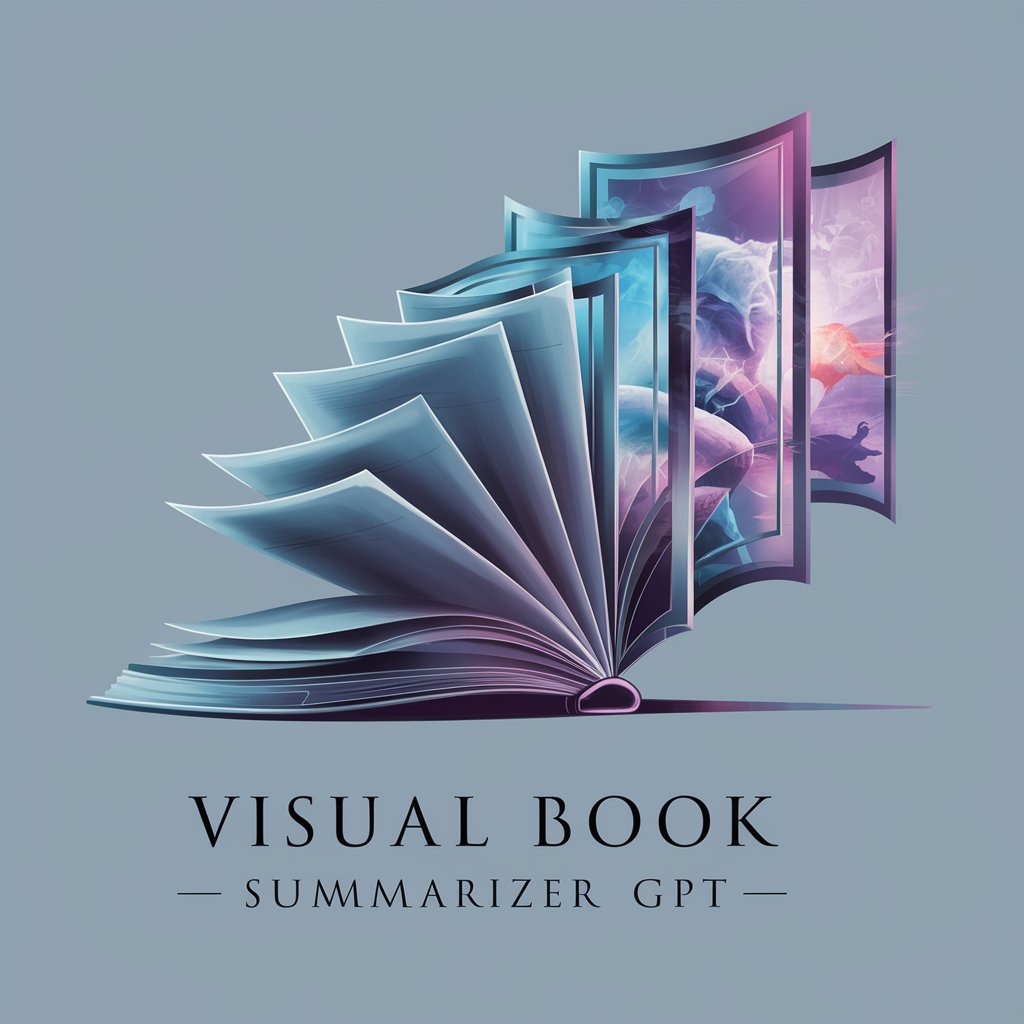
Welcome! Experience books visually.
Transforming Text into Visual Narratives
Describe the main events of this chapter and...
Summarize the character development in this part and...
Explain the primary conflict in this section and...
Outline the key themes of this chapter and...
Get Embed Code
Introduction to Visual Book Summarizer
The Visual Book Summarizer is a specialized AI tool designed to transform textual summaries of book chapters into visually engaging images. It operates by analyzing the tone, setting (realistic or fantastical), and main topics of a book chapter to generate a concise, three-sentence summary internally. Then, it crafts a detailed image prompt based on this analysis and produces a single image that encapsulates the essence of the chapter. This unique approach offers a novel way to engage with literary content, allowing users to grasp the chapter's atmosphere, themes, and key events through a visual medium. The summarizer is particularly adept at handling a wide range of genres, from fiction to non-fiction, adapting its output to fit the narrative style and thematic elements of the text. Powered by ChatGPT-4o。

Main Functions of Visual Book Summarizer
Tone Analysis
Example
Determining whether a chapter's tone is dark, whimsical, or suspenseful to guide the visual style of the image.
Scenario
In the case of a dark, Gothic novel, the summarizer would produce an image with a somber color palette and eerie elements to visually represent the text.
Setting Identification
Example
Identifying if the narrative is set in a realistic world or a fantastical universe.
Scenario
For a chapter set in a fantastical world, the image generated might include mythical creatures or surreal landscapes, differentiating it from images created for realistic settings.
Chapter Summary Visualization
Example
Creating a visual summary of the chapter's main events, characters, and themes.
Scenario
After summarizing a chapter about a climactic battle, the summarizer could produce an image depicting the intensity of the conflict, key characters in action, and significant symbols or themes present in the text.
Ideal Users of Visual Book Summarizer Services
Educators and Students
This group benefits from the summarizer by using visual summaries to enhance comprehension and engagement with literary texts, making it easier to discuss themes, characters, and settings in an educational setting.
Book Clubs and Literary Enthusiasts
Members can use visual summaries to stimulate discussion and provide unique perspectives on the chapters they are reviewing, enriching their reading experience and fostering a deeper connection with the material.
Authors and Publishers
This group might use the service to create promotional materials or explore new storytelling techniques. Visual summaries can serve as intriguing previews of a book's content, attracting potential readers.

How to Use Visual Book Summarizer
1
Start by visiting yeschat.ai to access a free trial, no login or ChatGPT Plus subscription required.
2
Select the Visual Book Summarizer from the list of available tools.
3
Upload or paste the text of the book chapter you wish to summarize.
4
Click on the 'Summarize' button to process your request.
5
View the generated image that visually summarizes the chapter's essence. For best results, ensure clear and concise chapter text is provided.
Try other advanced and practical GPTs
GHG GPT
Empowering sustainability with AI

History Scholar ...
Unveiling the past with AI-powered precision

GptOracle | The ADHD Support Advisor
Empowering Focus with AI

Especialista en Marketing y Creación de Contenido
Empowering Your Content with AI

AGI
Empowering creativity and innovation with AI

COLORING BOOK BUILDER
Unleash Creativity with AI-Powered Art

Domain Name Generator
Innovative AI-powered domain creativity.

Troubleshooting Buddy
Your AI-Powered Problem Solver

Movie Explainer
Unlock the stories behind your favorite movies.

Undetectable Paraphraser
Redefining Content with AI Precision

Agile Dev
Empowering Agile Teams with AI

I STAND FOR PEACE
AI-Powered Peace Dialogue Facilitator

Frequently Asked Questions about Visual Book Summarizer
What is the Visual Book Summarizer?
It's a tool designed to create visual summaries of book chapters, transforming text into imagery that captures the chapter's essence.
Can I summarize any type of book?
Yes, the tool is versatile and can handle both fiction and non-fiction, as well as realistic and fantastical themes.
How does the summarizer decide on the image to generate?
It analyzes the tone, setting, and main topics of the chapter, then creates an image that visually represents these elements.
Is there a limit to the chapter length?
For optimal performance, it's recommended to summarize chapters that are clear and concise, but the tool can handle various lengths effectively.
Can I customize the visual style of the summary?
Currently, the style is determined by the tool's interpretation of the chapter, focusing on creating the most representative imagery.
